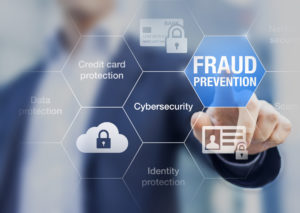The banking industry has undergone a remarkable transformation in the era of digitization, enabling seamless transactions and improved customer experiences. However, with these advancements come sophisticated threats that target digital banking platforms. Banking professionals must remain vigilant and informed about the myriad of digital banking frauds that can compromise institutional security and customer trust. Here are nine types of fraud to be aware of!
Phishing Scams
Phishing scams are a prevalent form of digital banking fraud that exploits human psychology. Attackers impersonate trusted entities, such as banks or credit card companies, and send deceptive emails or messages to trick recipients into revealing sensitive information. These emails often contain links to fake websites that closely resemble legitimate ones, where unsuspecting users enter their login credentials, account numbers, or personal identification information. The stolen data is then used for unauthorized transactions or identity theft. Banking professionals should prioritize educating customers on recognizing and reporting phishing attempts to mitigate this threat.
Account Takeover
Account takeover fraud involves cybercriminals gaining unauthorized access to a bank account by obtaining login credentials through various means, such as phishing, social engineering, or data breaches. Once access is achieved, fraudsters can drain funds, change account details, and conduct illicit transactions. This type of fraud poses a significant risk as it can go unnoticed until substantial damage is done. Implementing multi-factor authentication (MFA) and monitoring account activity for unusual behavior are crucial measures banks can take to prevent account takeovers.
Card Skimming
Card skimming involves the illegal copying of credit or debit card information using a skimming device attached to ATMs or point-of-sale (POS) terminals. These devices capture card data from the magnetic stripe, which is then cloned onto a counterfeit card. Skimming can also extend to card-not-present (CNP) transactions, where fraudsters steal card details through online transactions. Banking professionals should enhance security measures around ATMs and POS systems, such as using chip-enabled cards and regularly inspecting devices for tampering signs.
Malware and Ransomware Attacks
Malware and ransomware attacks are sophisticated forms of digital banking fraud where malicious software is used to gain unauthorized access to banking systems or data. Malware can be introduced through phishing emails, infected websites, or software downloads. Once inside the system, it can capture keystrokes, steal sensitive data, or disrupt operations. Ransomware encrypts critical data, rendering it inaccessible until a ransom is paid. To counter these threats, banks must implement robust cybersecurity measures, including regular software updates, employee training, and comprehensive incident response plans.
SIM Swapping
SIM swapping is a technique where fraudsters convince a mobile carrier to transfer a victim’s phone number to a SIM card controlled by the attacker. With control over the phone number, the fraudster can intercept SMS-based two-factor authentication codes sent by the bank, allowing them to access the victim’s accounts. This type of fraud is particularly dangerous as it bypasses traditional security measures. Banks should consider alternative authentication methods, such as app-based authentication or biometric verification, to enhance security.
Fake Banking Apps
Fake banking apps are malicious applications designed to mimic legitimate banking apps and steal sensitive information from users. They are often distributed through unofficial app stores or disguised as useful tools. Once installed, they can capture login credentials, intercept communications, and even display fake interfaces to trick users into divulging more information. Banking professionals should ensure that customers download apps only from official app stores and regularly update their apps to include the latest security features.
Man-in-the-Middle Attacks
Man-in-the-middle (MITM) attacks occur when an attacker intercepts and manipulates communication between two parties, such as a user and their bank. This can happen over unsecured Wi-Fi networks or through malware that redirects traffic. The attacker can steal login credentials, divert funds, or alter communication without either party realizing the breach. Banks can mitigate MITM attacks by enforcing the use of secure, encrypted connections (HTTPS) and educating customers on the risks of using public Wi-Fi for banking transactions.
Identity Theft
Identity theft involves the unauthorized use of an individual’s personal information, such as social security numbers, addresses, and birthdates, to open new accounts or access existing ones. It can lead to significant financial loss and damage to the victim’s credit score. Criminals obtain this information through data breaches, phishing, or social engineering. To protect against identity theft, banks should implement robust identity verification processes and regularly monitor accounts for suspicious activity.
Insider Threats
Insider threats stem from employees or contractors who have access to sensitive information and use it maliciously. These individuals can exploit their access to commit fraud, steal data, or facilitate external attacks. Insider threats are challenging to detect as they often come from trusted individuals. Banks should enforce strict access controls, conduct regular audits, and foster a culture of security awareness to mitigate the risk of insider threats.
Become a Certified Fraud Specialist with BankersHub
The landscape of digital banking fraud is complex and continually evolving. Banking professionals must stay informed about these threats and implement comprehensive security measures to protect their institutions and customers. BankersHub’s Certified Fraud Specialist (CFS) course is designed for banking and credit union professionals looking for new or refresher training in the most common and overlooked fraud exposure weaknesses affecting the industry today. With our 8-course on-demand training, learners will discover insights and actions they can take to mitigate fraud activities, protecting their institution and their customers’ resources. Register today to get started!








